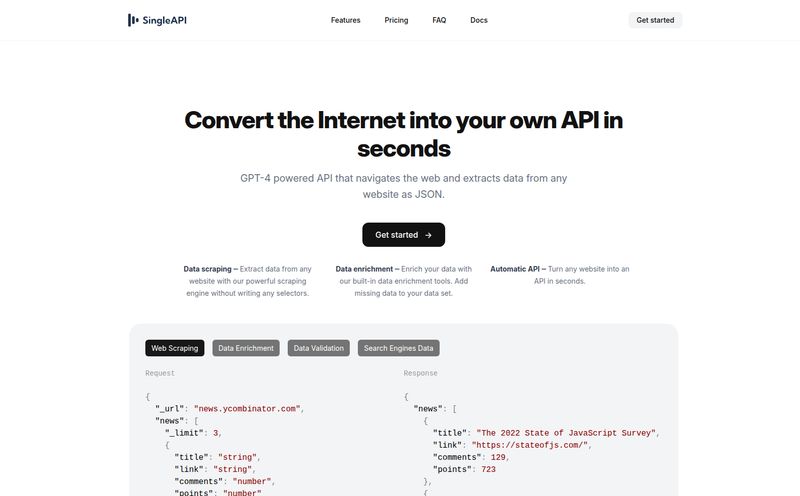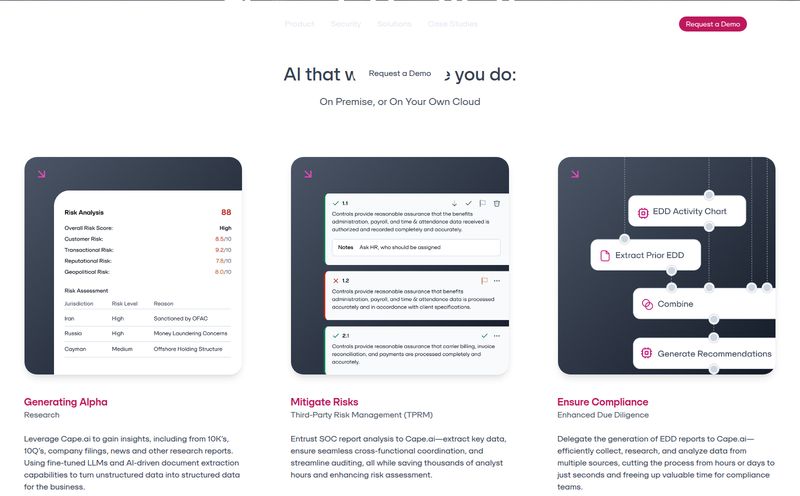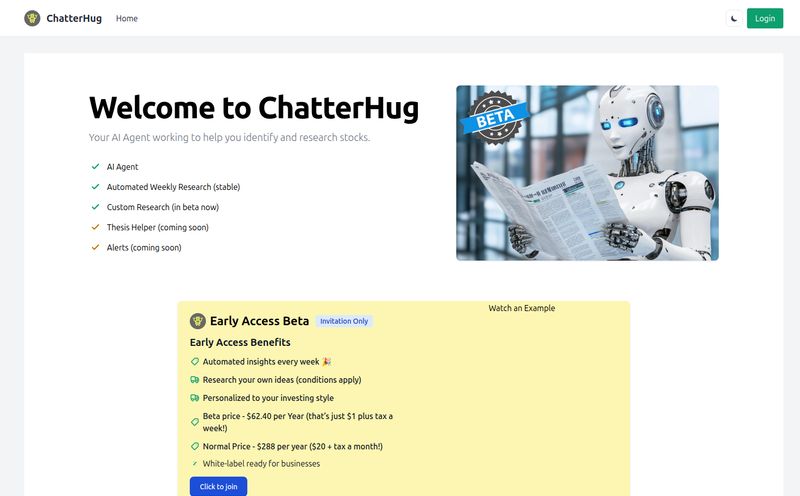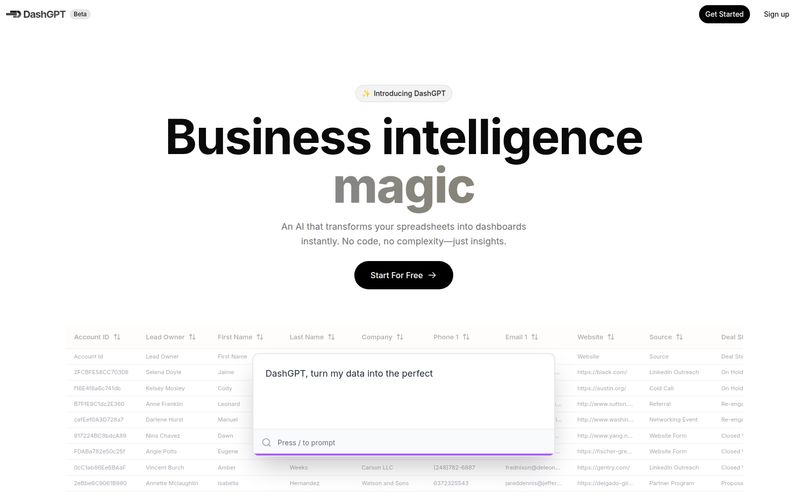If you’ve ever worked in an office, you’ve faced The Pile. You know the one. The teetering stack of invoices, purchase orders, or forms that stares at you from the corner of your desk, silently judging your life choices. Manual data entry. It’s the corporate equivalent of washing dishes by hand for a banquet of 500 people. Tedious, mind-numbing, and ripe for errors.
For years, we’ve been promised solutions. OCR (Optical Character Recognition) was supposed to be the savior, but it often just turned a messy paper document into a messy digital text file, leaving you to do the real work of figuring out what it all meant. It was like hiring a translator who only knew nouns.
But recently, I've been playing around with a platform that feels… different. It’s called Nanonets, and it’s not just about reading documents; it’s about understanding them. And after putting it through its paces, I think we might finally have a tool that can tackle The Pile for good.
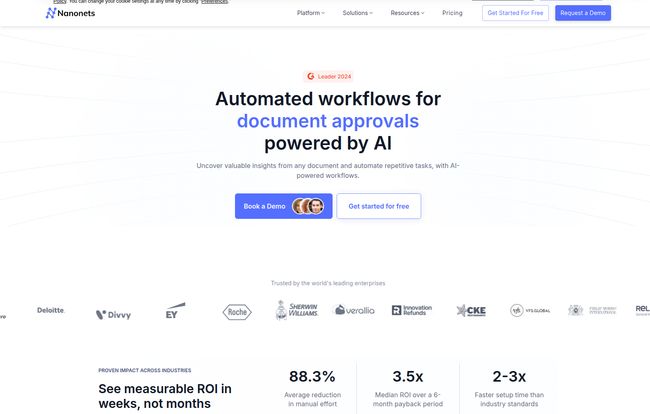
Visit Nanonets
So, What is Nanonets, Really?
On the surface, Nanonets is an “Intelligent Document Processing” (IDP) and workflow automation platform. Okay, I know, more industry jargon. Let me translate. Think of it less like a simple scanner and more like a super-smart junior employee who you can train to handle your most repetitive document-based tasks. This employee can read an invoice, understand which number is the total amount and which is the due date, check if it matches a purchase order, and then send it to the right person for approval—all without your intervention.
It’s built to automate the gnarly, document-heavy processes that clog up entire departments. I'm talking about things like:
- Accounts Payable: Instead of someone manually typing invoice details into QuickBooks, Nanonets does it for them.
- Supply Chain: It can process purchase orders and bills of lading 50% faster, untangling logistics knots.
- Insurance Claims: Imagine processing claims in minutes, not days. That's the goal here.
The big promise? They claim to see measurable ROI in weeks, not months. A bold claim, but from what I’ve seen, not an entirely outlandish one.
The Secret Sauce: How Nanonets Puts AI to Work
The magic isn’t just one thing; it’s a process. Nanonets breaks it down into a simple, four-step flow that even I, a humble SEO blogger, can wrap my head around.
The Four-Step Automation Dance
- Ingest: First, you have to get your documents into the system. Nanonets isn't picky. You can upload files directly, connect it to your email inbox, or link it to cloud storage like Google Drive or Dropbox. It vacuums up the chaos from wherever it lives.
- Understand: This is where the AI really flexes. It doesn’t just read the text; it identifies and extracts the meaningful data. It knows an “Invoice Number” is different from a “PO Number.” And the best part? It learns. If it gets something wrong and you correct it (they call this “Human-in-the-Loop”), it remembers that correction for next time. It gets smarter with every document it processes.
- Take Action: Once the data is captured and understood, Nanonets can automate the next steps. This is where you build your workflow. You can set up rules like, “If the invoice amount is over $5,000, send it to the department head for approval. Otherwise, send it directly to accounting.”
- Export: Finally, the clean, structured data gets sent where it needs to go. This could be your ERP system, a CRM, a database, or even just a simple Google Sheet. The loop is closed. The Pile is defeated.
My Favorite Features (The Stuff That Actually Matters)
A lot of platforms boast a million features, but only a few truly change your daily life. Here’s what stood out to me with Nanonets.
The No-Code Dream Is Alive
I am not a developer. My coding skills peak at messing up the HTML in a WordPress post. That's why the no-code workflow builder is so refreshing. It's a drag-and-drop interface where you connect different “blocks” to create a process. One block for fetching emails, another for extracting invoice data, another for sending a Slack notification. It makes building a complex automation feel more like playing with Legos than writing code. This is huge for empowering the actual people who do the work—the AP clerks, the operations managers—to build the solutions they need without having to wait six months for the IT department.
Integrations That Don't Cause Headaches
A tool like this is useless if it lives on an island. Nanonets seems to get that. It has pre-built integrations for a ton of common business software—Salesforce, NetSuite, QuickBooks, you name it. For everything else, there are APIs and webhooks, so if you do have a tech-savvy person on your team, they can connect it to pretty much any homegrown system you're running.
AI That Isn't Just a Buzzword
The platform’s ability to improve over time is its most powerful aspect. The company claims it can reduce manual errors by over 88%, and I believe it. Why? Because you're not stuck with a rigid template. You're training a custom AI model on your specific documents. So, if your vendors all have wildly different invoice layouts, it doesn't matter. You teach Nanonets what to look for, and it adapts. It’s the difference between a one-size-fits-all t-shirt and a tailored suit.
Let's Talk Turkey: Nanonets Pricing
Ah, the all-important question. How much does this magic cost? I appreciate that Nanonets isn't super cagey about its pricing, which is a nice change of pace in the B2B software world. They have a few tiers that cater to different needs.
| Pricing Tier | Best For | The Gist |
|---|---|---|
| Pay as you go | Startups, small teams, or testing the waters | You start with $200 in free credits, which is awesome. After that, you pay per “block” run in your workflow. No subscriptions, no commitments. Just pay for what you use. |
| Volume Pricing Tiers | Growing businesses with consistent document flow | If you’re processing a lot of documents, you can get volume-based discounts. This requires a chat with their sales team to get a custom quote. |
| Custom Solutions for Enterprise | Large corporations with unique or high-volume needs | For the big players. This is a fully customized plan with special add-ons and support. Again, you'll need to talk to sales. |
The “per-block” pricing of the pay-as-you-go model is interesting. It’s transparent but means your cost is directly tied to your workflow’s complexity. A simple workflow might cost less per document than a complex one with ten different checks and integrations. It’s fair, but something to keep in mind when designing your automations.
The Good and The Stuff to Be Aware Of
No tool is perfect, right? Here’s my balanced take.
What's great is obvious: it slashes manual work, boosts accuracy, and the no-code platform is genuinely empowering. The integrations are solid, and the flexible pricing means smaller companies can actually afford to get started. It’s a huge time and sanity saver.
On the other hand, it’s not a magic wand you just wave. There's an initial setup period where you have to connect your systems and train the AI on your documents. For more complex custom integrations, you might still need someone with a bit of technical know-how. And the usage-based pricing, while fair, means you need to monitor your consumption to avoid surprises. This isn’t a con, just a reality—powerful tools require a little bit of thoughtful implementation.
"The value that they bring to our partners is our AI platform with our clients...Nanonets helps us achieve this by having that human-in-the-loop validation, which makes us more efficient." - A quote I saw that perfectly captures the synergy between AI and human oversight.
My Final Take: Is Nanonets the Real Deal?
Yes. In my experience, I've seen a lot of so-called 'AI solutions' that are just overhyped templates. Nanonets feels different. It's a robust, well-thought-out platform that tackles a very real and very expensive problem for businesses. It's not about replacing humans, but about freeing them from the monotonous tasks that burn them out. It lets them focus on the things that require a human brain: analysis, strategy, and building relationships.
If you or your team are drowning in paperwork, I'd strongly suggest giving Nanonets a look. The $200 in free credits is more than enough to build a proof-of-concept and see for yourself if it can conquer your personal Paper Pile. Its a small step that could lead to a giant leap in your team's productivity and happiness.
Frequently Asked Questions About Nanonets
Is Nanonets just another OCR tool?
No, and this is a key point. OCR just reads text. Nanonets uses Intelligent Document Processing (IDP), which means it not only reads the text but also understands the context. It knows the difference between an invoice date and a shipping date, which is what allows for true automation.
Do I need to be a developer to use Nanonets?
For most uses, no! The no-code, drag-and-drop workflow builder is designed for business users, not programmers. However, if you have very complex needs or want to integrate with a custom-built internal system, having some technical help would be beneficial.
How secure is my data with Nanonets?
They take security very seriously. The platform is compliant with standards like SOC 2, GDPR, and HIPAA. This means they follow strict protocols for data privacy and security, which is essential when you're handling sensitive business documents.
What kinds of documents can Nanonets handle?
A huge variety. While invoices, purchase orders, and receipts are the most common, it can be trained on almost any structured or semi-structured document: tax forms, driver's licenses, bank statements, insurance claims, medical records, and more.
How does the $200 free credit work?
When you sign up for the Pay-as-you-go plan, you get $200 in credits to start. Every time you run a workflow, the cost of the blocks used is deducted from this credit. It's a risk-free way to build and test your automations to see the value before you spend a dime.
Conclusion
The push for automation isn't about getting rid of jobs; it's about making the ones we have more meaningful. Tools like Nanonets are at the forefront of this shift. By taking the robot out of the human, they let us focus on what we do best: solving problems, being creative, and driving real growth. The era of the dreaded paper pile is numbered, and frankly, I’m not going to miss it one bit.
